How to create an entryway in a living room - 6 ways to define your living room's entrance
These expert design tips will create a welcoming entryway to your living room - for you and your guests

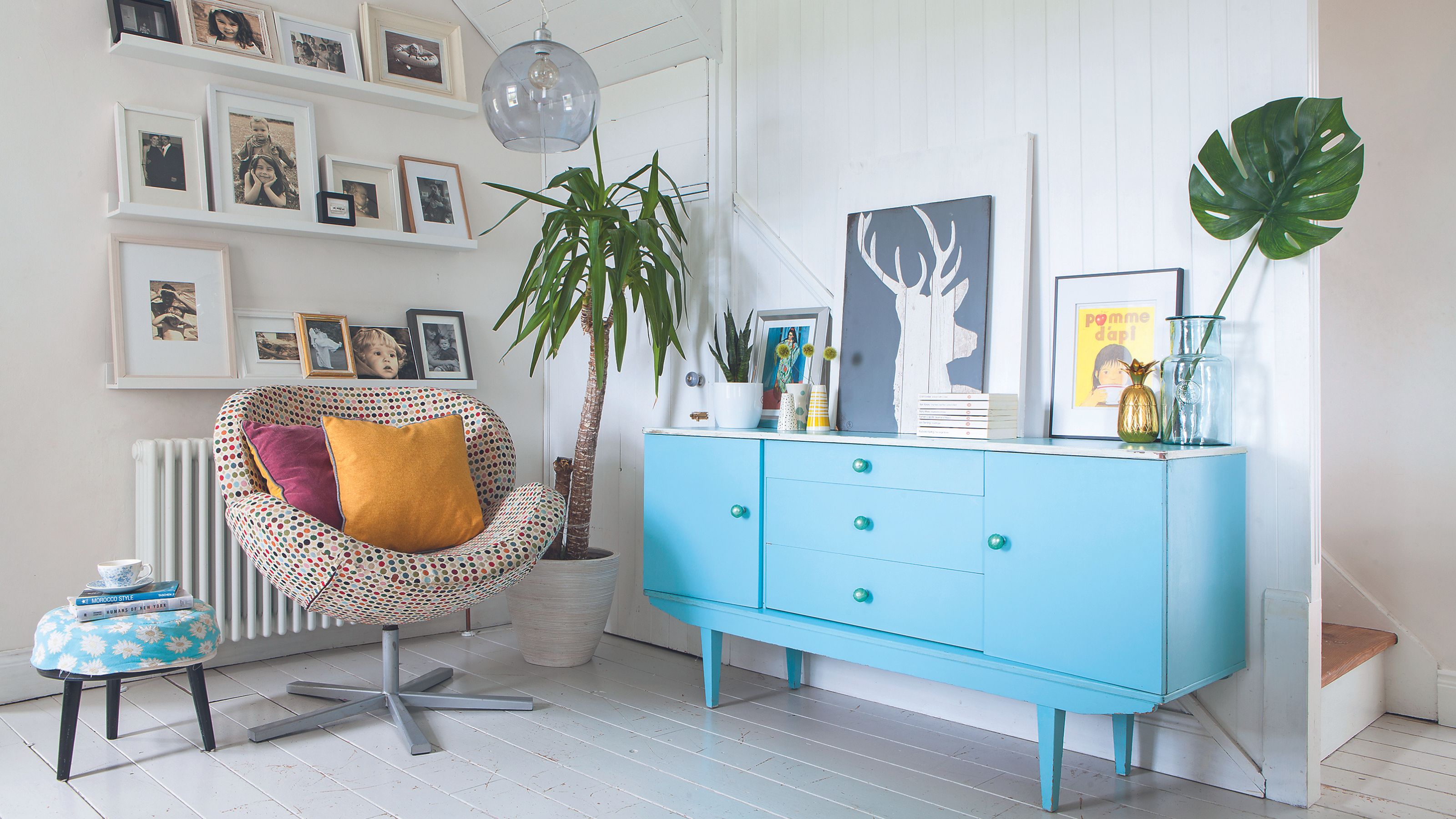
Knowing how to create an entryway in a living room is an easy way to make your living space more visually interesting. A distinct entrance area also helps to instantly set the mood of the space, signaling to us and our guests that it's time to relax.
Even small living room ideas can have a separate entryway, once you know all the right tips and tricks. And if you're living in an apartment or flat with a front door that leads straight into the living area, it's even more important to borrow some hallway ideas and fake an entryway.
But how do you create a separate entryway in a living room? Does it require a lot of planning, or can we do it with just a few simple changes? Well, according to interior design experts, anyone can learn how to create an entryway in a living room, no matter the size of the space.
We've spoken to the experts to find out how to create an entryway in a living room. Here are six design tips that will help you build a stand-out entrance area, to greet you and your guests.
1. Create a distinct boundary with furniture
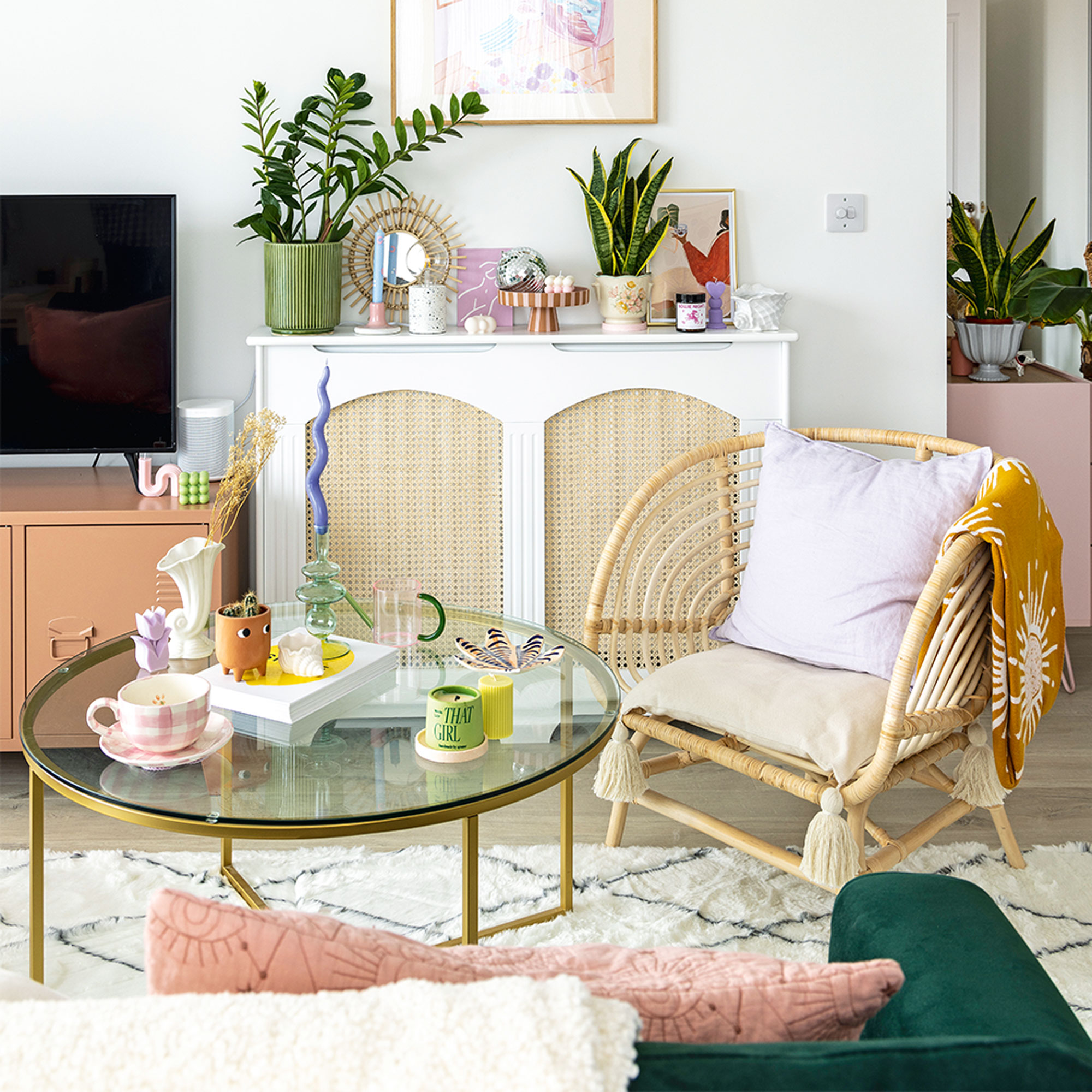
Placement of the furniture is key for learning how to create an entryway in a living room. You can use a sofa or console table to create a distinct entrance area, separate from the rest of the space.
The best sofas come in especially handy for this trick. Place the back of the sofa so that it sits perpendicular to the living room's door, so that people have to walk past it to access the living room. 'It's like setting the stage for your living room's performance,' Amanda Foster of Foster Decor says.
Alternatively, you can use a console table to create a similar effect. As long as it is positioned in a way that creates an entryway for people to walk through when they enter the room, it will work. 'In smaller living spaces this is still possible, just choose a smaller console/side table that's slim in stature to avoid taking up too much space,' says Lee Trethewey, Interiors Expert, Sustainable Furniture.
Sign up to our newsletter for style inspiration, real homes, project and garden advice and shopping know-how
2. Add statement lighting

'Think about adding some statement lighting just for the entryway,' Lee Trethewey says. 'Whether this is a lamp or a wall sconce, it'll help to set the two areas apart.'
Living room lighting ideas are key throughout the room, but they can be especially helpful when create a distinct entrance area. Wall sconces are a good addition, because these can sit on the wall closest to the door without taking up much space.
Or if you're using a console table to create the entryway, pop a nice table lamp on top of it. This will draw the eye to the space and help to make it more clearly defined, especially in the evenings when the lamp is switched on.
3. Use a physical partition
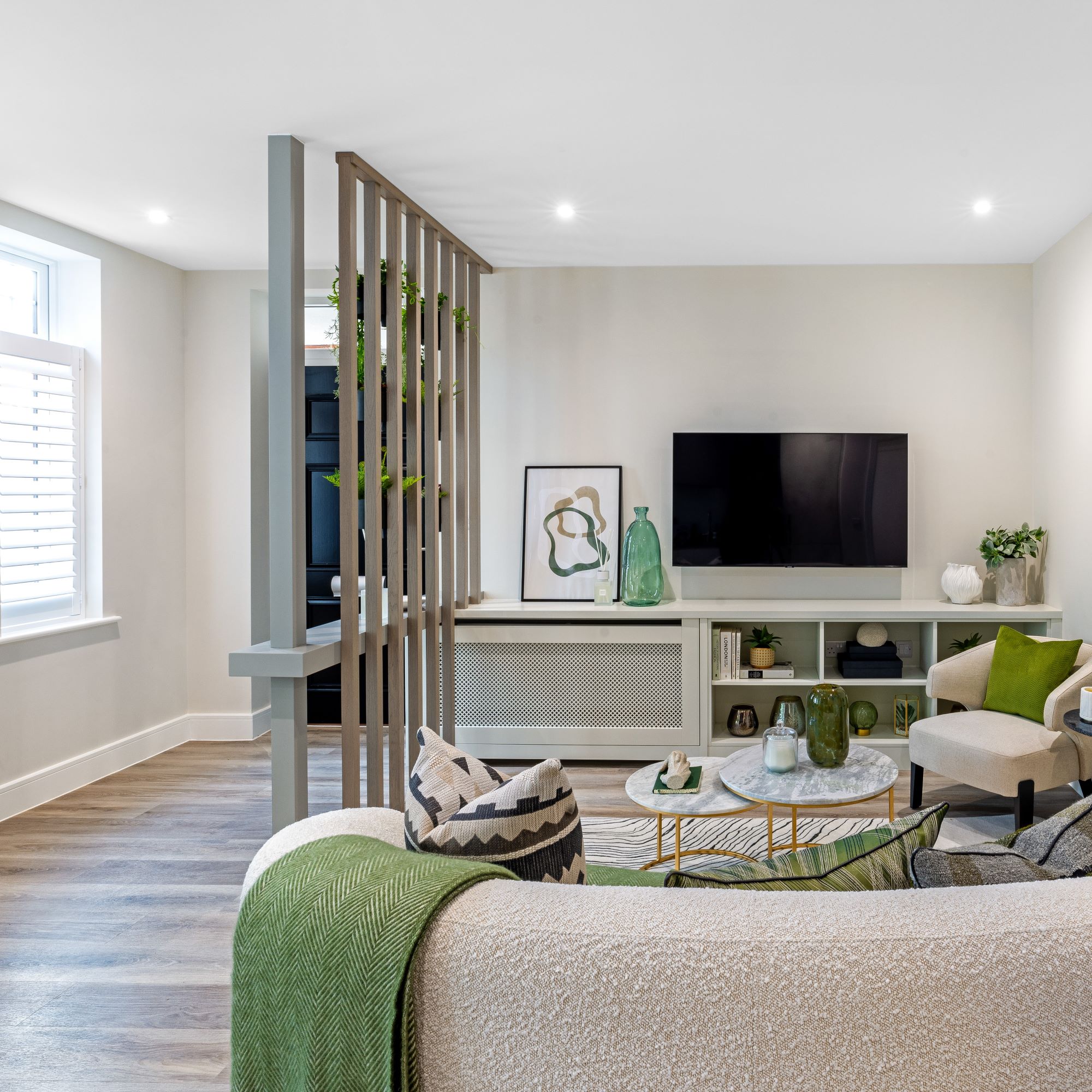
'A decorative screen, half wall, open shelving unit or a classic partition can help to separate the entryway,' Lee says. 'Opt for one that lets light through so light isn't restricted in any area.'
A physical partition is an easy way to create a distinct entryway, and is especially ideal in open-plan living room ideas. You can install a sheer floor-to-ceiling curtain to help separate the area without blocking any natural light from the rest of the room.
Consider bespoke joinery options if you want to create a stand-out entryway. A wooden partition designed to fit within the dimensions of your space adds a chic, modern look, while creating a distinct walkway for people to enter the living room through.
4. Define the area with a rug
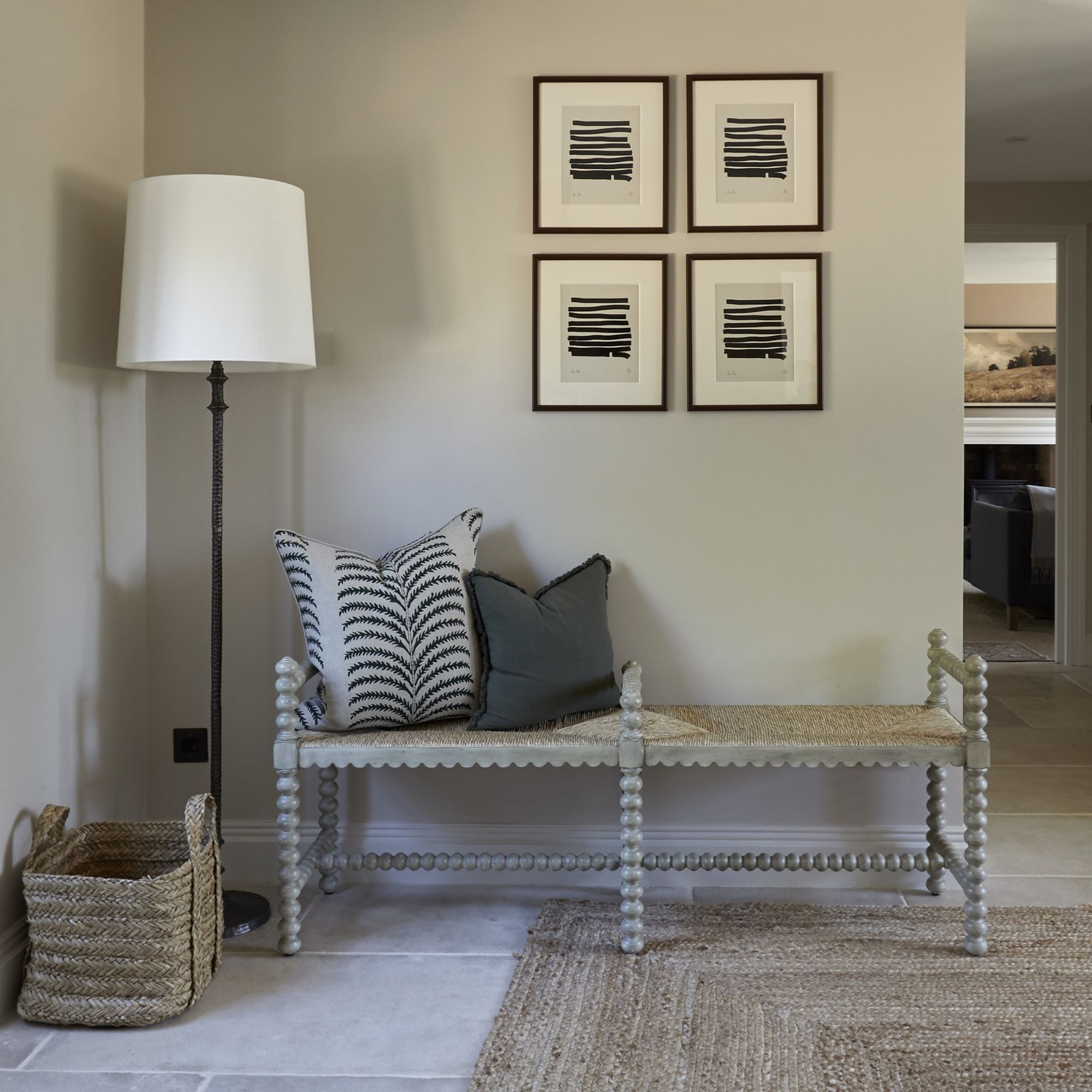
'To create a defined entryway in a living room, ground the area with a distinct rug that contrasts with the living room flooring,' says Claire Garner, Director, Claire Garner Interiors. 'This will create a visual boundary which you can then build upon.'
Adding a rug will cement the entryway as a distinct area from the rest of the space. A runner rug works particularly well for this, because it can start at the base of the living room door and then lead across the entrance into the room. The added texture of the rug will instantly make the space feel more inviting, for guests and for yourself as well, as you retreat into the living room to relax.
5. Use open storage solutions
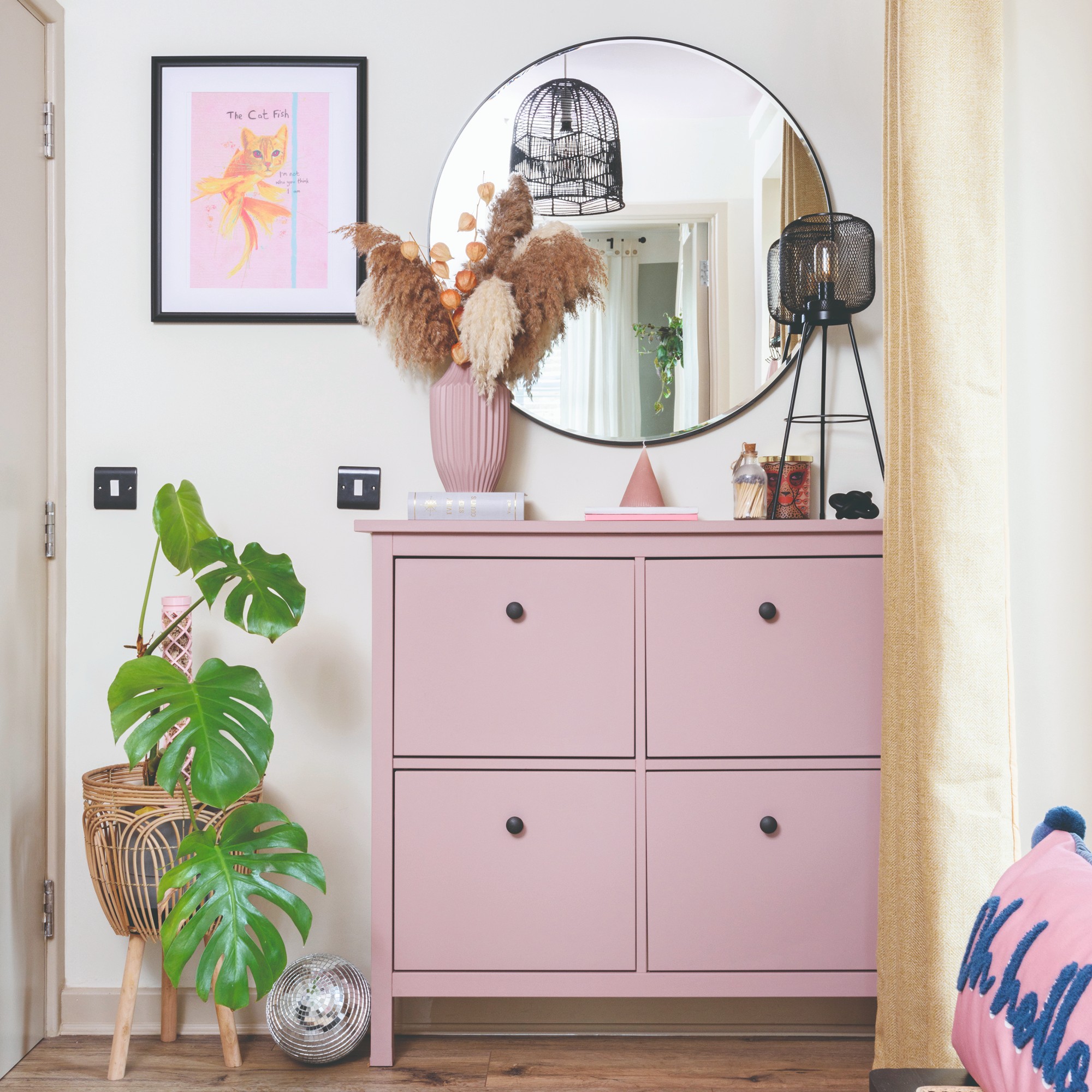
Another way of separating your entryway is to use living room storage ideas, such as a small cabinet, floating shelves, or an open bookcase. All of these will create a clear physical barrier without blocking the rest of the room from sight. You can then use the storage unit for both functional and decorative purposes.
'Place the unit opposite the wall your door opens onto and in line with your runner rug to create the separation,' says Cassandra Leisz, Creative Director, Ruggable. 'Style the shelves with your favourite books, travel mementos, plants and flowers, or decorative storage baskets. You can even stow shoes in decorative bins for hidden storage.'
If your front door opens onto a living room and you don't have the space for this, placing a slimline storage unit or console table next to a door will also help create the illusion of a separate entranceway.
6. Finish with a focal point
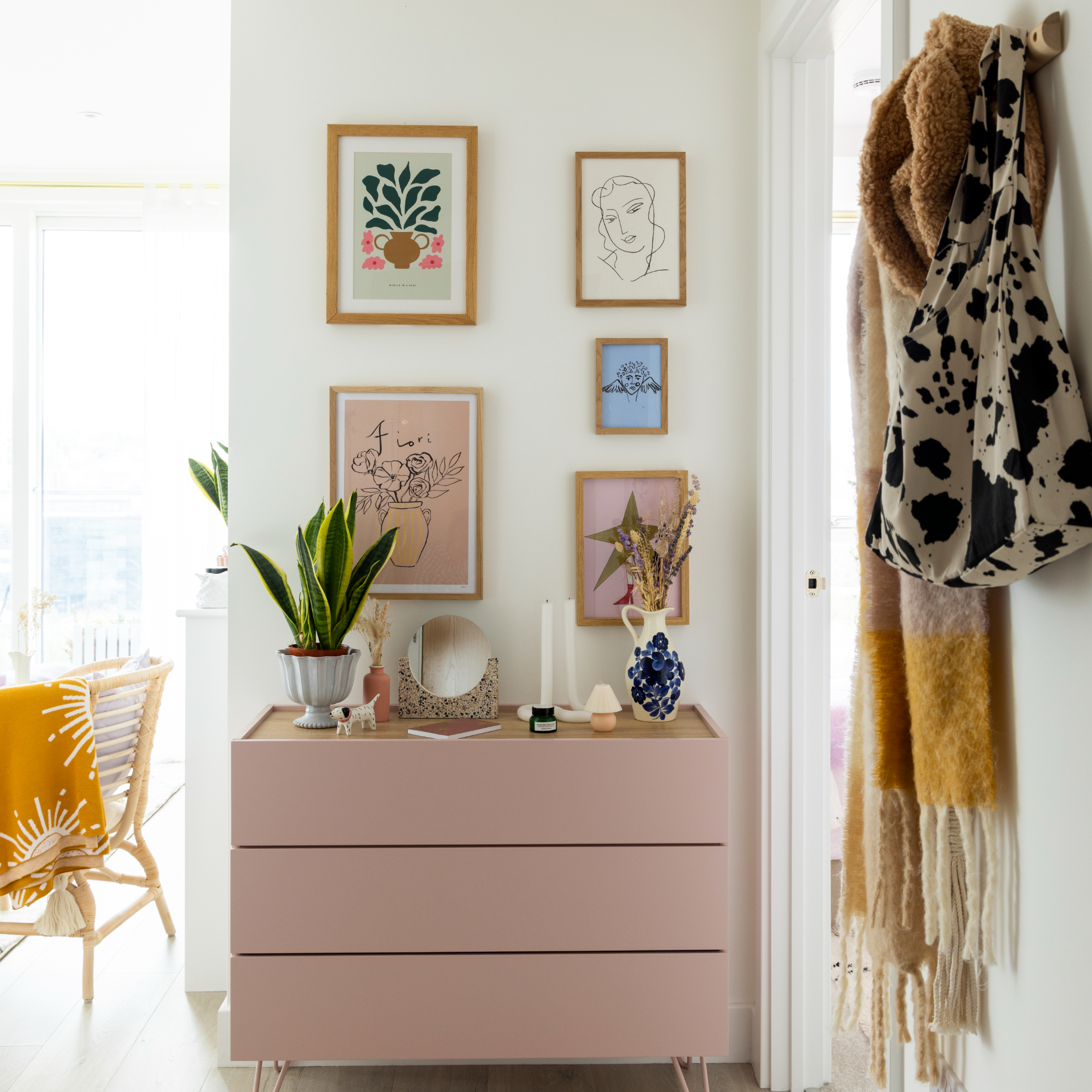
Part of learning how to create an entryway in a living room is using different elements to make it stand out. Incorporating a focal point will help emphasise the entryway and naturally draw the eye to the area when someone walks into the room.
A statement mirror, piece of artwork or lighting fixture will all help build a distinct entryway. Mirror ideas are particularly helpful because they help bounce light around, but a key piece of art on the wall would equally draw attention to the area. Though you want the focal point to make a statement, ensure that it still fits with the design of the rest of the living room - you don't want the entryway to become too distracting.
FAQs
How do you build an entryway in an open-plan living room?
With an open-plan living area, you'll have more space to play with and will be able to create a distinct entryway zone. Furniture such as a sofa or an armchair is the easiest way to do this. Position them in a way that creates a clear visual barrier, and separates the entrance area from the rest of the room.
'It's a good idea to arrange your furniture so that it faces away from the front entryway door, creating a "back" for the entryway area,' says interiors expert Lee Trethewey. 'A sofa or a chair is a good key piece of furniture that helps to create a boundary that separates the entry from the main living space.'
Alternatively, you can install bespoke partitions. Wooden structures from the floor to ceiling add a modern look to a living room, while creating a separate walkway. Add a runner rug to the floor to make the space look more inviting.
'For larger areas, think about physical dividers like a tasteful bookshelf or a sheer curtain to softly mark the entry space without closing it off completely,' suggests Dave Hamilton, Founder, Rockhopper Locks. 'This method preserves an open atmosphere while adding a touch of privacy.'
How do you disguise a front door in a living room?
Hiding a front door that leads directly into the living room can be tricky, but there are some design hacks that will work.
One option is to hang a decorative screen over the back of the door. This is a fun way to incorporate different textures into the room, and will transform the door from a purely functional element to an interesting part of the decor.
'Another option is to paint the door the same colour as the walls on the internal side,' Lee says. 'This will help it blend seamlessly, rather than creating a defining area. You should also turn your chairs and seating away from the front door if possible. This means that when you're sitting and relaxing in the living space, you aren't obviously aware of the front door being right there at all times.'
Now you know how to create an entryway in a living room, will you be using any of these design tips to build a stand-out walkway?
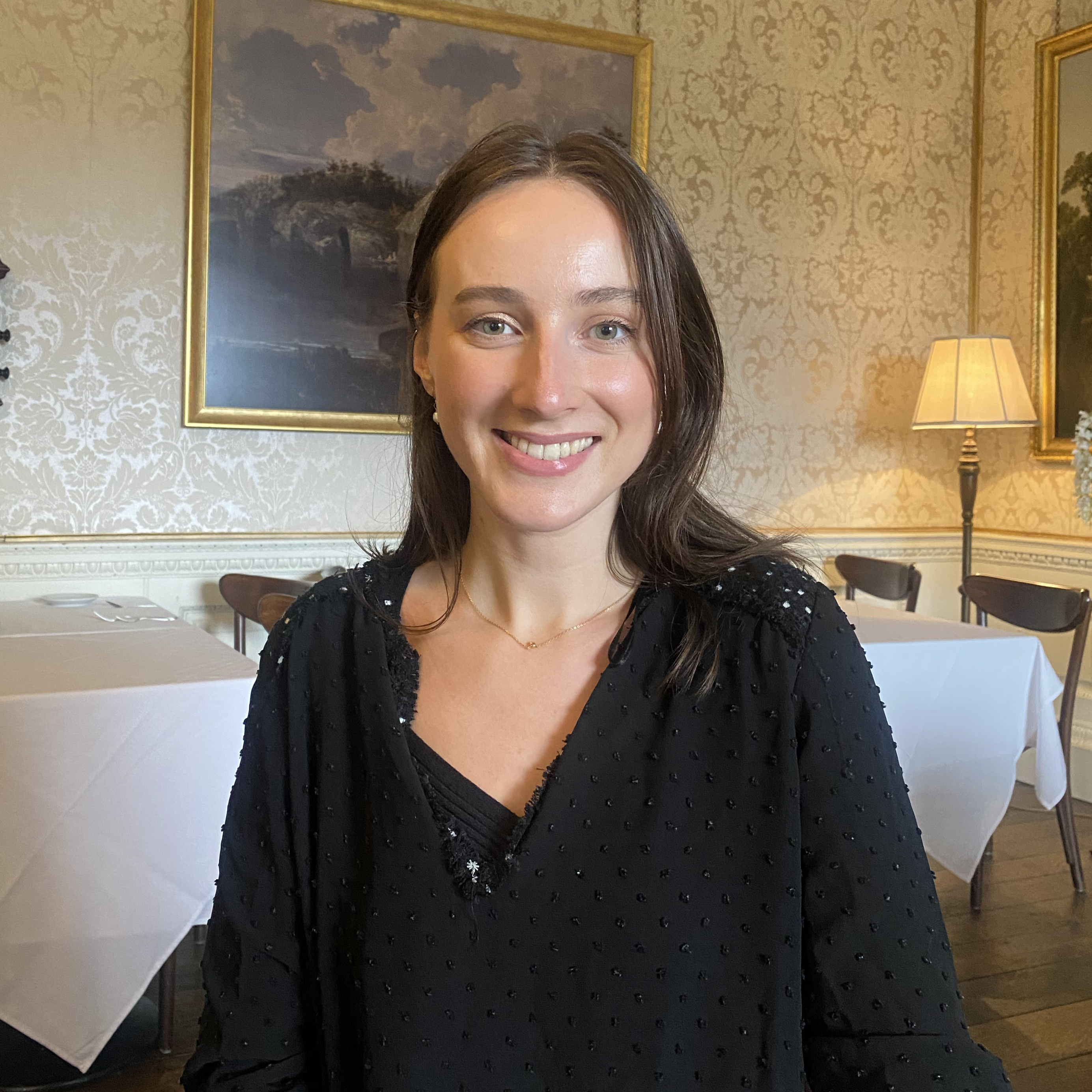
Katie has been writing freelance since early 2022, specialising in all things homes and gardens, following achieving a Masters in Media and Journalism. She started out writing e-commerce content for several of Future’s interior titles, including Real Homes, Gardeningetc, Livingetc, and Homes and Gardens. Since then she’s been a regular contributor on Ideal Home’s digital team, covering news topics, how-to guides, and product reviews.